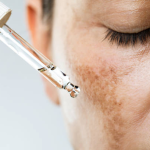When we delve into the luxurious realm of beauty and skincare, a riveting topic that often arises is the use of stem cells in products meant to restore and rejuvenate our complexion. Stem cells in beauty products predominantly come from plant sources or are bioengineered in laboratories, and they promise cutting-edge results in anti-aging and skin regeneration. But where exactly do these powerful components originate from, and how are they leveraged in our favorite creams and serums? This article aims to uncover the reality behind stem cells in the beauty industry and provide insight into their various sources, extraction methods, and impacts on the skin.
What Are Stem Cells and Why Are They Valued in Skincare?

Stem cells are the bodies’ master cells, capable of transforming into a variety of other cell types, offering the unparalleled ability to repair and regenerate tissues. In the context of skincare, these cells are praised for their potential to revitalize skin by promoting new cell growth and combating signs of aging. Unique for their multi-potency, stem cells can be coaxed into becoming skin cells, which is why the beauty industry sees them as a treasure trove of youth-preserving possibilities.
The Healing Power of Stem Cells
The allure of stem cells lies in their inherent power to heal and regenerate. When applied topically as part of a beauty regimen, these cells release growth factors and cytokines, signaling skin cells to repair damage or rejuvenate aging skin. Stem cells in beauty products don’t integrate into the skin; instead, they act as a catalyst for skin cells to improve their function, aiding in reducing fine lines, improving texture, and enhancing overall skin health.
The Various Sources of Stem Cells in Beauty Products

The beauty sector taps into a myriad of sources to harness the regenerative power of stem cells. From the lush greenery of plants to the complex systems of human tissues, these sources are carefully selected based on efficacy and ethical guidelines. Let’s explore these diverse origins and their contributions to the skincare industry.
Plant-Derived Stem Cells
Plant-derived stem cells are a cornerstone in the world of beauty products. Hailing from resilient and reparative botanicals, these stem cells are often extracted from the likes of apples, roses, or edelweiss. They provide antioxidants and are used to protect the skin from environmental stressors, all without the ethical concerns that accompany the use of human stem cells.
Human-Derived Stem Cells
Human-derived stem cells, on the other hand, possess an innate compatibility with our skin but come with their own set of ethical connotations. Extracted from adult tissues or sometimes from donated umbilical cords, these stem cells must be harvested and manipulated with the utmost ethical standards and consent procedures.
Other Sources and Synthetic Alternatives
Beyond the realms of flora and ourselves, researchers also explore other organisms, as well as synthetic alternatives, for potential stem cell use. Through genetic modification and biotechnological advancements, new frontiers are being explored to create ethical and sustainable options for stem cell sourcing in beauty products.
The Extraction and Use of Stem Cells in Skincare Formulations
Extraction of stem cells, be they from plant or human sources, is a delicate and precise process that ensures the purity and efficacy of the final skincare product. This process often involves cultivating the cells under strict laboratory conditions and subsequently harvesting the valuable components that will be used in formulations.
Ensuring Safety and Efficacy
The use of stem cells in beauty products is heavily regulated to ensure the safety of consumers. Organizations around the world set guidelines and standards to govern the extraction, handling, and use of these cells, helping to reassure users of their safety and cosmetic benefits.
| Type of Stem Cell | Source | Benefits in Skincare | Ethical Considerations |
|---|---|---|---|
| Plant-Derived | Various botanicals | Antioxidant properties, environmental protection | Low ethical concerns |
| Human-Derived | Adult tissue, umbilical cords | High compatibility with human skin | High ethical concerns |
| Synthetic Alternatives | Laboratory-engineered | Potential for customization, consistent quality | Varied ethical considerations |
Debunking Myths: What Stem Cells in Beauty Products Can and Can’t Do
Stem cells in beauty products are often surrounded by misconceptions and exaggerated claims. Understanding their actual benefits and limitations can help consumers make informed decisions. Here’s what stem cells in cosmetics can and can’t do:
- Can Enhance Skin Repair: Stem cells derived from plants can help support the skin’s repair processes by providing antioxidants and growth factors that improve skin regeneration and reduce inflammation.
- Can’t Replace Damaged Cells: Unlike medical stem cell therapies, stem cells used in beauty products do not integrate with human tissues to replace damaged cells. Their primary role is topical and supportive rather than transformative.
- Can Provide Antioxidants: Many stem cell products contain high levels of antioxidants which can protect against free radical damage and improve skin health and appearance.
- Can’t Reverse Aging Completely: While stem cells can help in reducing the appearance of wrinkles and fine lines by promoting skin elasticity, they cannot reverse the aging process completely.
- Can Improve Skin Texture: Products containing stem cells can contribute to a smoother skin texture and improved complexion by supporting the skin’s natural turnover and renewal processes.
The Future of Stem Cells in Beauty: Innovation and Trends
The use of stem cells in the beauty industry is poised for significant evolution, with emerging trends and innovations shaping its future. Advances in biotechnology are enabling more effective extraction and utilization of stem cells, particularly plant and fruit stem cells, which are becoming popular due to their sustainability and efficacy. Upcoming trends include the development of more targeted treatments for skin rejuvenation and anti-aging that leverage the unique properties of stem cells to deliver active compounds more efficiently. Additionally, there is a growing trend towards combining stem cell technology with other breakthroughs such as nanotechnology and 3D bioprinting to create more potent and personalized skincare solutions. As regulatory frameworks evolve, these advancements will likely become more mainstream, offering exciting possibilities for personalized beauty regimens tailored to individual skin needs.
Conclusion
In essence, stem cells in beauty products offer a glimpse into the marriage of nature’s innate healing abilities with advanced scientific research. These components primarily originate from plant sources or laboratory endeavors, reflecting a conscious effort to blend efficacy with ethical practices. As we have explored, while stem cells do not transform our own cellular makeup, they do present a powerful ingredient in the alchemy of skincare—promising to repair, rejuvenate, and revitalize our skin.
FAQs
- Are stem cells in beauty products actually live cells?
No, beauty products typically do not contain live stem cells. Instead, they are made up of the extracts and by-products of these cells, believed to offer various benefits to the skin. - Can using stem cell-infused beauty products influence my own stem cells?
There is no scientific backing that suggests topical stem cell products can directly interact with or influence your body’s stem cells. Their role is more supportive, invoking a skin-enhancing response rather than altering cellular structures. - Are stem cell beauty products ethical to use?
The ethics of stem cell beauty products can depend on their source. While plant-derived stem cells generally present few ethical issues, human-derived stem cells necessitate more rigorous ethical considerations to ensure their responsible use. - Is there a difference in effectiveness between plant and human stem cells in beauty products?
The effectiveness varies between the two, as they produce different kinds of compounds and growth factors. Plant stem cells are rich in antioxidants, whereas human stem cells may produce substances potentially more recognizable to the skin. - How can I identify if a beauty product contains stem cells, and are they right for my skin?
Examine the ingredient list for terms like ‘stem cell extract,’ specific plant names, or references to biotechnological ingredients. It’s imperative to consult with a dermatologist to assess if these components align with your skin’s needs.


